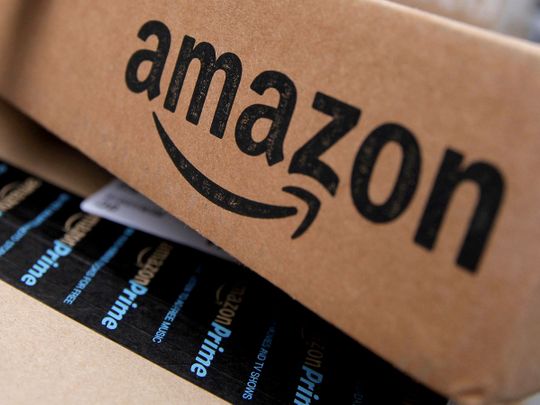
New York. Amazon.com brought in a record $3.6 billion in profit during the first quarter of 2019, more than doubling its profit from a year ago and continuing its streak of record-breaking earnings.
The company’s lucrative advertising and cloud computing businesses notched the bulk of its profits and helped boost margins even as sales growth slowed. Overall, first-quarter sales rose 17 per cent to $59.7 billion, compared to sales growth of 46 per cent last year.
Amazon executives said Thursday they are working to offer free one-day shipping to the company’s 100 million Prime members, which will require an $800 million investment during the second quarter. The retailer currently offers free two-day shipping on most Prime orders.” We expect to make steady progress quickly and through the year,” Brian Olsavsky, Amazon’s chief financial officer, said in a Thursday earnings call with analysts. “We feel like we’re doing something very important for the customer and we’re trying to take advantage of the fulfilment capacity and the transportation capacity we have.”
Meanwhile, sales at the company’s physical stores — which include about 500 Whole Foods stores, as well as a growing fleet of Amazon book stores, pop ups and cashier-less convenience stores — grew just 1 per cent to $4.3 billion from $4.26 billion a year ago.
“There is no disguising the slower pace at which the company is moving forward,” said Neil Saunders, managing director of GlobalData Retail. “It is clear that Amazon is now in a different era — one characterised by more modest gains.”
He added that increased competition from retailers like Walmart and Target, which have been rapidly investing in their websites and delivery services, is also eating into Amazon’s customer base.
“For a long time, Amazon was the only real player in the game,” Saunders said. “Now it is having to share the field with an increasing line-up of formidable rivals.”
Since its founding 25 years ago, Amazon has grown rapidly into one of the country’s largest and most influential companies. In addition to its flagship e-commerce business, the Seattle-based giant also has a toehold in a number of other industries, including grocery delivery, home security and movie production. Earlier this week, the company announced that it would begin accepting returns at all Kohl’s department stores, giving it yet another way to connect with shoppers both online and in stores.
But its breakneck growth has also caught the attention of regulators — and President Donald Trump — who argue that the company’s market dominance gives it too much power.
(Jeff Bezos, the founder and chief executive of Amazon, also owns The Washington Post.)
There are signs that the company’s growth is slowing, even in its cloud and advertising businesses. Revenue from Amazon Web Services grew 41 per cent to $7.7 billion, compared to growth of 49 per cent a year earlier.
Amazon’s digital advertising business, meanwhile, grew about 34 per cent to roughly $2.7 billion, compared to 95 per cent growth in the first quarter of last year. Even so, analysts said they were hopeful that the advertising business — the third-largest in the country, behind Google and Facebook — would continue to benefit Amazon.
Amazon’s “advertising flywheel now appears to be in full effect and will only be a bigger part of the growth story,” Andrew Lipsman, an analyst for eMarketer, said in an email.
As the company has grown, it has become a clearing house for smaller businesses. More than half of the company’s merchandise is sold by third-party sellers. Shipping costs, meanwhile, rose 21 per cent during the first quarter to $7.32 billion.
Shares of Amazon’s stock rose about 2 per cent following its earnings release. The company’s stock is up almost 30 per cent this year.
Amazon said it employed more than 630,000 workers during the first quarter, a 12 per cent increase from the year before. The retailer is the country’s second-largest private employer, behind Walmart.
Last fall, the company raised its hourly minimum wage to $15 an hour following widespread criticism that many of its workers were not making a living wage.
“Today I challenge our top retail competitors (you know who you are!) to match our employee benefits and our $15 minimum wage,” he wrote in his annual letter to shareholders. “Do it! Better yet, go to $16 and throw the gauntlet back at us. It’s a kind of competition that will benefit everyone.”












